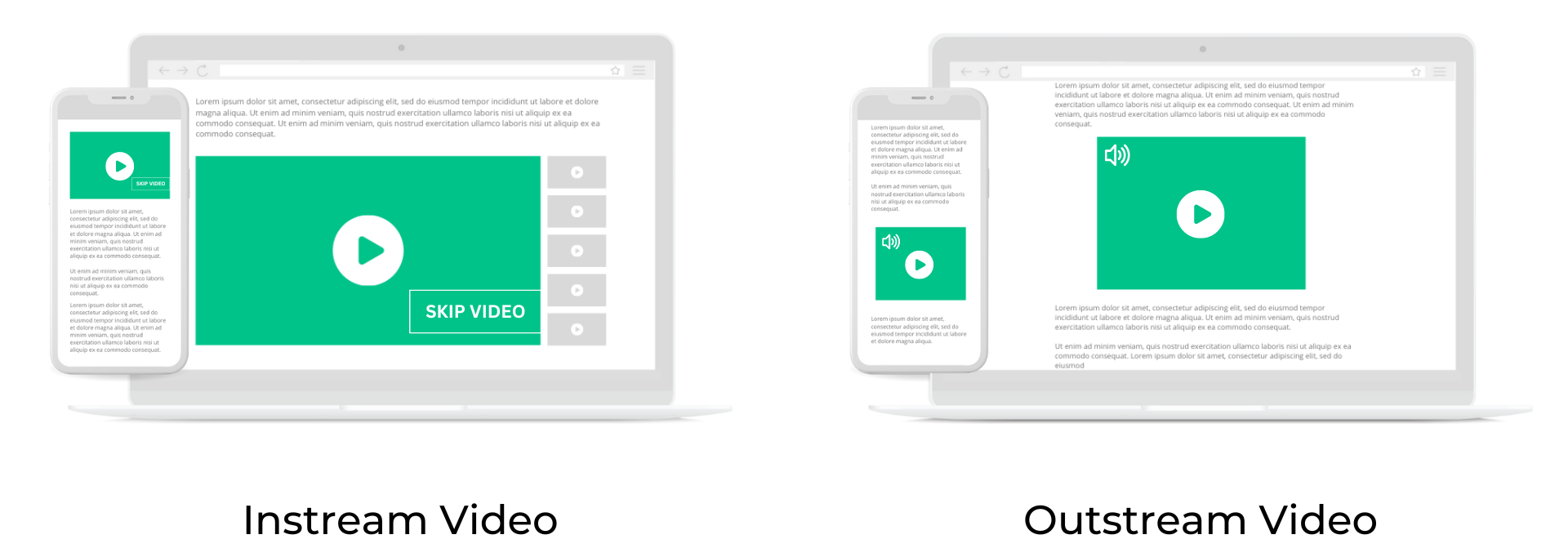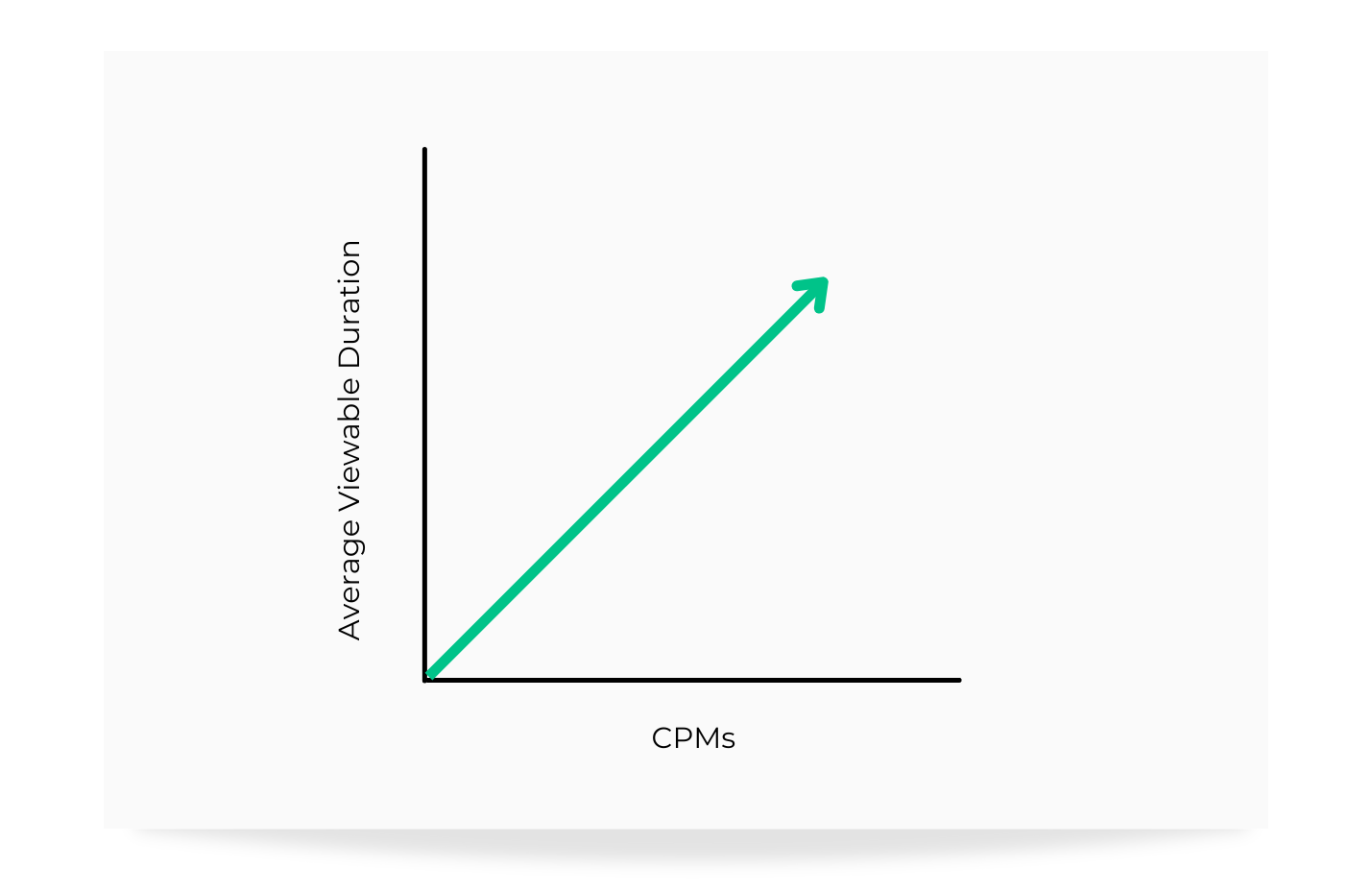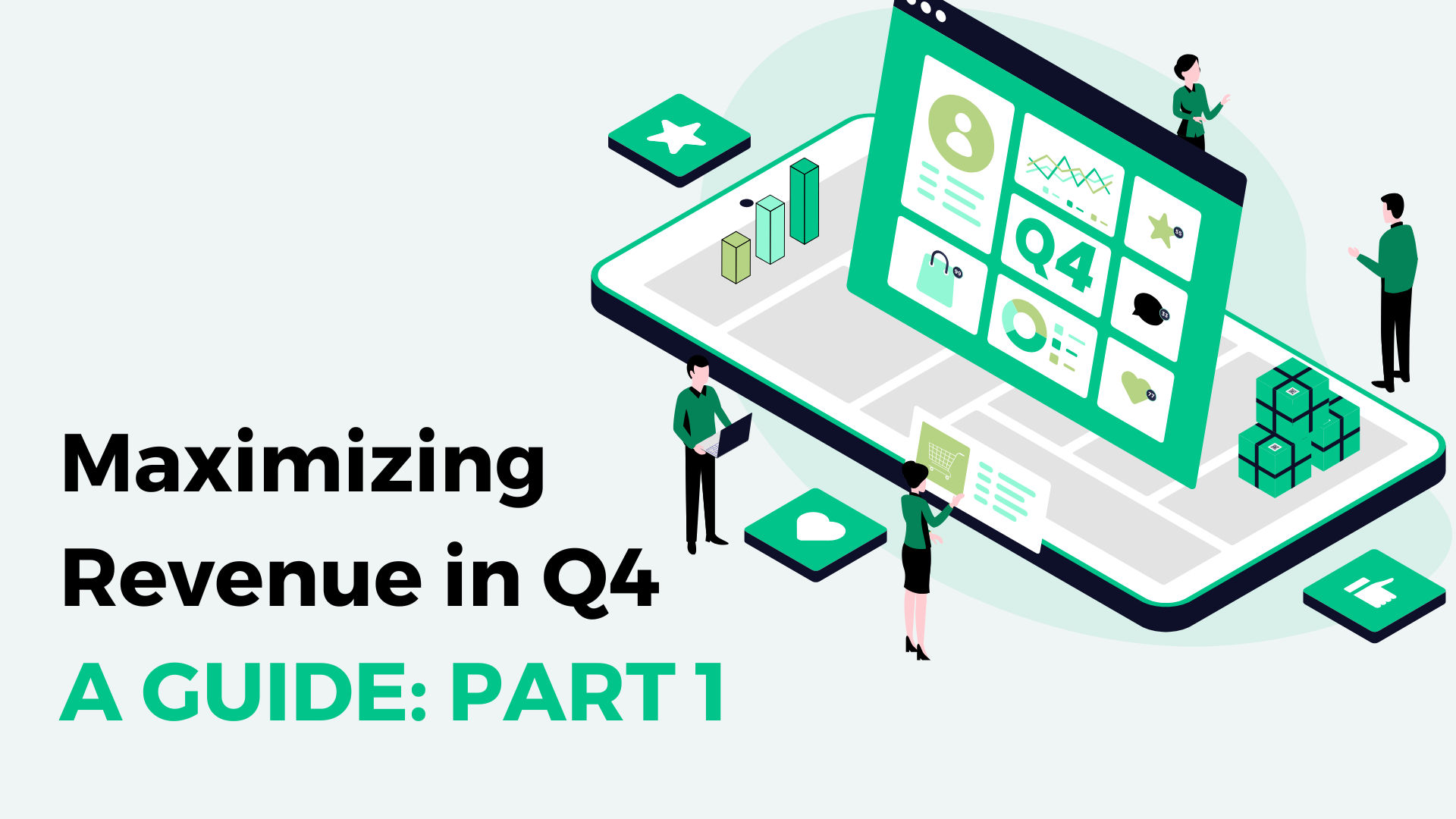“Do users even like video?”
“Won’t it impact the user experience?”
“What are my options for video?”
These are just some of the questions we receive around implementing video ad formats.
Before I answer those questions, let’s look at the stats:
- 91% of consumers want to see more online videos from brands in 2023
- 95% of consumers retain a message delivered through video, compared to 10% when reading it in text
- 92% of marketers say video gives them a good return on their investment
With this type of sentiment – from both consumers and marketers – it’s obvious that video (content and ads) is here to stay. Users like to watch videos, which in turn, improves overall engagement. Unsurprisingly, advertisers like video for that very same reason.
What are my options for video ad formats?
Generally speaking, there are two formats when is comes to video advertising:
- Instream Video are video ads that are delivered before, during or at the end of a video a user is viewing (often referred to as “pre”, “mid”, and “post” roll). This format requires a publisher to own or have access to video content.
- Outstream Video is a large format player delivered on page within text content (typically within an article). This format does not require a publisher to utilize any video content, as the ad is the video content.
Instream Video is a great monetization solution for publishers who have existing video content or access to a video library. If you’re worried about negative feedback from users – don’t be. Instream video ads are considered minimally intrusive and users have become accustomed to companies such as YouTube delivering instream ads throughout most of its content. At Freestar, our instream video ad implementation is straightforward. We can help a publisher increase the monetization of an existing video player; or work with them to integrate a new video partner entirely. In either scenario, we recommend the publisher initiates the video player from within the content block, then docking it to the side of the page and remaining 100% in-view as the user scrolls. This type of implementation will maximize yield.
If you’re not producing your own content or do not have access to a video library, then outstream video is the next best solution. You can think of outstream video like a display ad placement that delivers a video ad file. It does not utilize any type of video content, it is strictly a player to facilitate a video ad delivering on the site.. Freestar can facilitate this approach through the enablement of one of multiple demand partners specializing in outstream video.

Could I run both video ad formats on my site?
The short answer is yes. There is nothing prohibiting publishers from running both instream and outstream on a website. However, it’s important to note that in compliance with Google’s Video Publisher Policy a publisher can have “no more than one video ad placement may play in view at any given time”. This means that should you choose to utilize both instream and outstream formats, be mindful of the placement of each format in terms of section, page, scroll depth, etc to ensure there is no overlap. Not doing so would not only violate Google policy, but also erode the user experience on site.
What do I do if I’d like to implement instream ads but don’t have video content?
Don’t fret – that’s what an OVP is for! You can implement instream video without producing your own video content through the use of an OVP (Online Video Platform). These platforms can provide a full suite of video products and features which include use of both a video player and content library. Some OVPs are even vertical specific, meaning a publisher can curate and deliver contextually relevant video content to users to further increase engagement. Freestar has well established partnerships with a variety of best-in-class OVPs. If you have more questions about OVPs or video libraries, please reach out to your Customer Success Manager or email us.
What kind of revenue can I expect from video?
Typically, video ads command 3-4x the CPMs when compared to display advertising – depending on the quality and category of a site. When looking to maximize yield for video ad formats, the key metric to focus on is “average viewable duration”, or simply the amount of time the video ad is in-view for a given user.
At Freestar, we’ve identified a correlation between “average viewable duration” and CPMs. The higher the longer an ad is deemed “in-view”, the more valuable the ad unit becomes to potential advertisers which increases CPMs. Essentially, “average viewable duration” is the buy-side’s attempt to measure user attention.

What are other benefits of video?
If you’re still on the fence about utilizing video on your site, here are a few other benefits of adding video worth considering:
- Video improves Google ranking – In a 2020 report, 87% of video marketers claim that video had boosted traffic to their site as a result of SEO through link building and keywords. Having high-quality videos on your site gives you an opportunity to add highly searched keywords to the video’s title, description, tags and include a video transcript.
- Video increases user engagement – According to Biteable, 49% of marketers claim that videos help with audience engagement. An engaging video increases a user’s time on page and gives the user an opportunity to explore more of your website. More ‘time on page’ could generate a higher average viewable duration which would likely increase CPMs of video ads.
- Video provides a better website experience – A well-designed site with engaging videos can create an extremely positive experience. Content comes in many forms and it’s a known fact that users enjoy consuming video (*cough YouTube, Tiktok, instagram cough*). By incorporating video into your website, you’re giving users an opportunity to build a relationship with your brand and view different types of content that may appeal to them.
I hope that answers most, if not all your video questions. If we missed something, don’t hesitate to reach out to us. If you’re interested in implementing video or learning what Freestar can do for you, you can get started today by completing this form. We hope this article was helpful!






